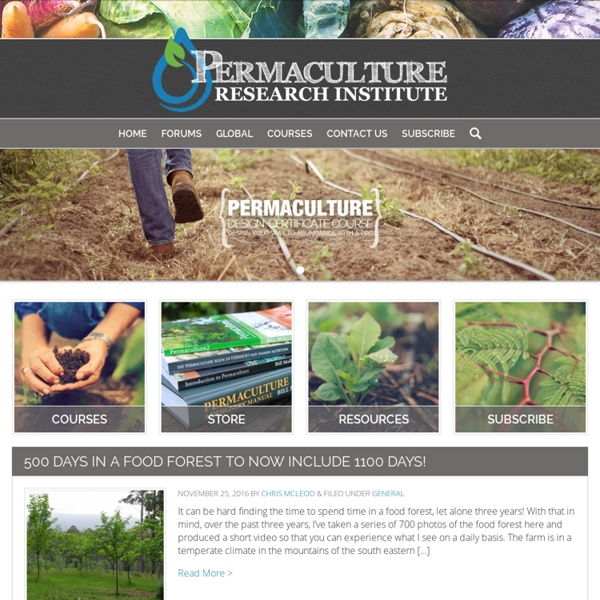



Permaculture Magazine - Inspiration for Sustainable Living | Permaculture Magazine Rebuilding in Disaster Areas | Natural Building Network Builders without Borders in Haiti – 5/3/2010 Should any NBN members want to practically support the relief effort in Haiti, then please send an email to office@nbnetwork.org. NBN does not directly manage such efforts, but help coordinate skilled people with relief organizations such as Builders Without Borders, Engineers Without Borders , Groundswell International, Kleiwerks International and the Permaculture Relief Corps. If you are a skilled natural builder or permaculturalist and would like to donate phone or email consultation time to organizations supporting rebuilding efforts in Haiti or elsewhere please fill out the form below. If you have a high need project that could use this list please contact us a office@nbnetwork.org.
Permaculture sans frontières | L'efficacité + l'éthique Permaculture urbaine Durant 5 jours, à travers des espaces symboliques de la capitale ou de la région, qui parfois focalisent l’attention, actions concrètes, débats, moments festifs et réflexions rythmeront ce festival. Au delà de l’évènement il s’agira d’enclencher une action permanente, vertueuse et participative. La nécessité de produire en circuits courts des aliments sains, sans produits chimiques, fait de plus en plus consensus mais les solutions divergent, de même que les priorités. Les terres agricoles représentent près de la moitié des terres en île de France mais seule une très faible partie de la production est consommée localement. Elles disparaissent en moyenne au rythme de 1650 ha par an dans la région, effacées par des projets souvent hors d’échelles, qui se cachent derrière des toitures ou des murs végétalisés et panneaux solaires. Jeudi 2 mai 19h : Rencontre / Débat. Vendredi 3 mai 14h-19h : l’Apiculture en pratique. avec Miel de quartier. Vendredi 3 mai 19h : des abeilles aux fruits.
DIY $2 self-watering garden bed - Grow produce easily, even in the toughest drought conditions - NaturalNews.com Thursday, June 26, 2014 by: Carolanne WrightTags: self-watering garden bed, sustainable agriculture, drought conditions (NaturalNews) "When life gives you lemons, share them with neighbors!" enthuses the Food is Free Project, a grassroots organization based out of Austin, Texas. It all began as a single, front yard organic vegetable garden with a sign explaining that the food was free for the taking. The founders of the project realized that most people don't grow their own food because of financial considerations, as well as the time it takes to maintain the plot. A zany video demonstrating how to build the raised bed, along with a wealth of other gardening resources, can be found at the Food is Free Project website. As wisely observed by Buckminster Fuller, "You never change things by fighting the existing reality. Sources for this article include:
Permaculture Now! Work Exchange | Dancing Rabbit Ecovillage If you’d like to see what life is like at Dancing Rabbit and build your skills in sustainable living at the same time, you may be interested in a work exchange or internship position. In exchange for your help on a project, your project host typically provides for your living accommodations, food, and other living expenses while at Dancing Rabbit. Opportunities to gain hands-on experience is, of course, also part of the exchange. Projects often include natural building, green building, building design, organic gardening and food preservation, small agricultural endeavors, small business projects, childcare, and sustainable technology. The work exchange/internship “season” generally runs from April through October (though occasionally extended season opportunities arise). Technology Engineering / Sustainable Living Intern Culinary Assistant & Baker Gardening, Livestock Systems, Green Building, Ecovillage Lifestyle Internships
Les Nouvelles des Permaculteurs arbre Identification des végétaux APA 1500 - Identification des végétaux - Professeur: Bruno GADRAT Racine pivotante La racine pivotante ou pivot se forme au moment de la germination de la graine. Racines et radicelles Les racines ont trois rôles. L'essentiel du système racinaire (ensemble des racines principales, secondaires et des radicelles) se situe dans le premier mètre sous la surface du sol (image ci-contre mesure a). Les radicelles sont les jeunes racines. Racine principale Les racines principales sont les racines les plus âgées. Drageon Un drageon est une branche vigoureuse qui développe un nouveau système aérien de l'arbre à partir d'une racine. Tronc C'est l'axe principal qui s'est développé et a grossi en circonférence au fur et à mesure des années. Branche principale ou charpentière C'est une branche qui part du tronc. Gourmand C'est une branche vigoureuse qui développe un nouveau système aérien de l'arbre à partir d'une branche adulte. Branche secondaire Rameaux et brindilles Bruno Gadrat
ThriveLiving